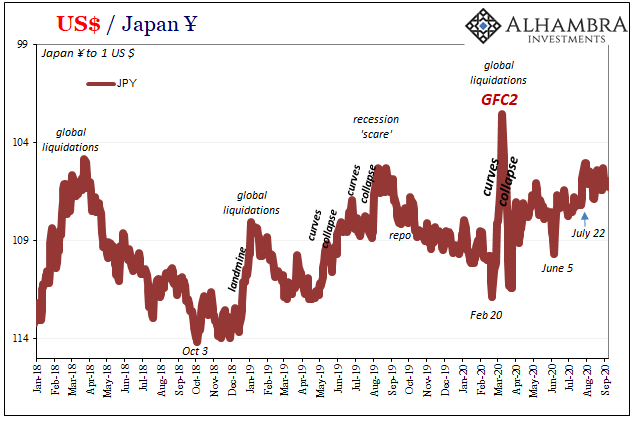 There is one question many investors are asking after noting that with Cruz dropping out of the Republican primary, Trump has secured the nomination, and that is whether the dollar has turned.
There is one question many investors are asking after noting that with Cruz dropping out of the Republican primary, Trump has secured the nomination, and that is whether the dollar has turned.The greenback has extended yesterday’s reversal higher. The euro had briefly poked through $1.16 and closed on its lows a little below $1.15. Sterling peaked above near $1.4770 and finished near$1.4535 for a potential key reversal. Despite weakness in US stocks and a sharp drop in US yields, two usual props for the yen, the dollar recovered from JPY105.50 to over JPY106.50.
The Australian and Canadian dollars fell sharply. The RBA surprised many by cutting rates, but as we know from the euro and yen’s strength easier monetary policy has not dominated the exchange rate channel. The point is that both the Australian dollar posted an outside down day while the US dollar recorded a potential key reversal against the Canadian dollar.
Although follow-through US dollar’s gains have been recorded, they have been marginal, except for sterling. Sterling has, until yesterday, managed to shrug off recent disappointing data. Yesterday’s disappointing manufacturing PMI has been echoed by the construction PMI. It fell to 52.0 from 54.2. The sector accounts for less than 7% of the UK economy but it is at a three-year low and manufacturing is contracting. The services PMI is is out tomorrow. A small decline from 53.7 in March is expected. The general dollar environment seems key for sterling. A break of $1.4450 would likely target $1.4375, which is a retracement objective and the 20-day moving average, which sterling has traded above since April 18.
In any event, it is difficult to argue the dollar is strong near JPY107 and with the euro just below $1.15. Although the US reported an increase in auto sales after a soft March (17.32 mln units annualized rate in April vs. 16.46 mln in March), it has difficult to see the fundamental triggers for the dollar’s recovery. Over the last five sessions, the US 2-year premium over Germany has narrowed by 10 bp. The US 10-year premium over Japan narrowed seven basis points yesterday. Nor was there a change in the market’s contention that a June Fed move is highly unlikely. The implied yield of the June Fed funds contract is 38 bp. The average effective Fed funds rate 36-37 bp. There is half a basis point spread between the bid and offer.
Some caution against extending dollar shorts may have been spurred by the proximity of the US jobs data. The median guesstimate from Bloomberg’s survey is for ADP to come in at 195k today and for a 200k rise in nonfarm payrolls at the end of the week. We understood the FOMC statement last month to acknowledge the continued improvement in the labor market but noted it was not spilling over to consumption. To us, this means that a decision to hike in June needs more than a good jobs report.
The $1.1465 area was the first technical target for the euro, and it saw $1.1470 in Europe. We suspect a break of the $1.1400-$1.1430 area is needed to give more credence to views that the euro has peaked. The dollar has more work to do against the yen. The JPY108 area, and more like JPY108.75 is needed to be recaptured to solidify the dollar’s low.
In addition to the UK construction, the eurozone reported its services PMI and composite. Although the service PMI slipped to 53.1 from 53.2 flash reading, the composite was unchanged from the initial reading of 53.0, which is down from 53.1. The eurozone economy then is largely stable at the start of the Q2. German and French preliminary reports were revised slightly lower. As we saw in the manufacturing PMIs so too with the Italian and Spanish services. Italy’s economic recovery continues. The 52.1 reading compares with 51.2 in March, and the composite bounced back (53.1) after a three month slowing in Q1. Spain’s 55.1 services PMI was a little lower than the 55.3 reading in March, but it is above the median forecast on Bloomberg. The 55.2 composite reading is the second consecutive gain.
In addition to the ADP report, the US releases the March trade balance, which may help economists begin thinking about revisions to the 0.5% Q1 GDP. The same applies to factory orders and durable goods orders. The March data are more important for economists than investors. A good ADP report, coupled with the gains in auto sales suggests the US economy is strengthening in Q2. The disappointing manufacturing ISM earlier this week showed a broader even if not a quicker recovery. Both Markit and ISM report their service sector readings today for April. Both are expected to have ticked up from March.
Tags: Japanese yen,newslettersent,U.S. Nonfarm Payrolls






































